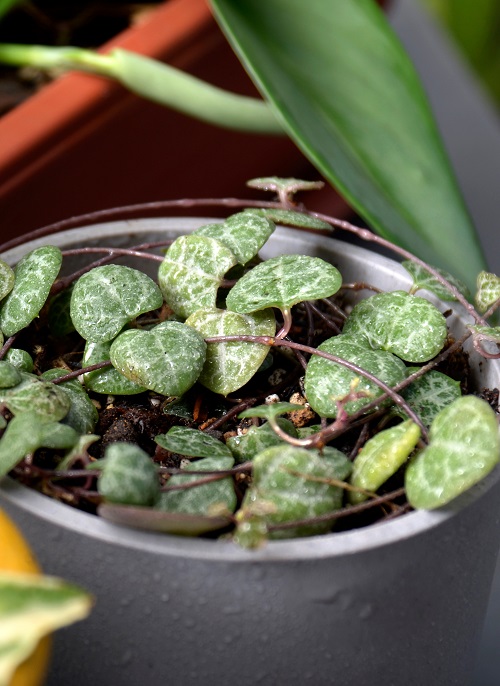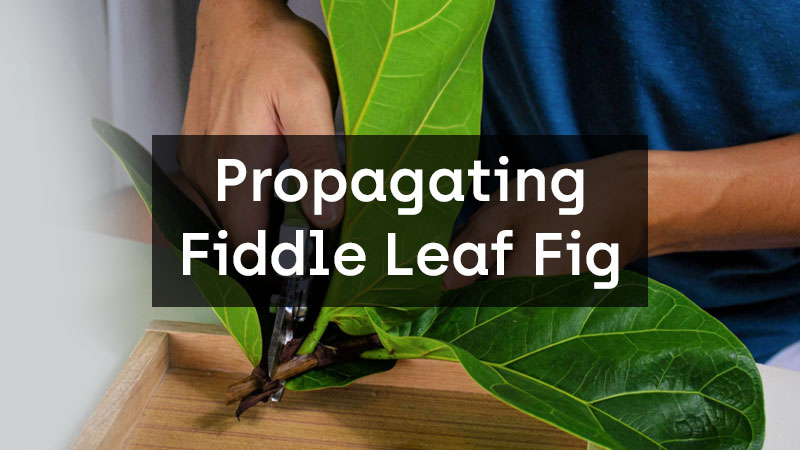Understanding Your String of Hearts
The String of Hearts (*Ceropegia woodii*) captivates plant enthusiasts with its cascading stems and charming heart-shaped leaves. This charming succulent, also known as Rosary Vine, is a popular choice for hanging baskets and indoor displays. Its trailing habit creates a beautiful, flowing effect, making it an ideal addition to any home or garden. The plant’s ease of propagation further contributes to its widespread appeal. Learning how to propagate string of hearts allows plant lovers to easily expand their collections and share this delightful plant with others. The unique beauty and relatively simple care requirements make it a perfect choice for both novice and experienced gardeners interested in learning how to propagate string of hearts. Many find the propagation process itself rewarding, offering a sense of accomplishment and a deeper connection with their plants.
String of Hearts’ popularity stems from its low-maintenance nature and its ability to thrive in a variety of indoor conditions. Its heart-shaped leaves, ranging in shades of green and sometimes displaying silvery markings, add a touch of elegance and whimsy. The plant’s adaptability contributes to its success as a houseplant. However, the true allure of String of Hearts lies in its ease of propagation. The various methods available, from stem cuttings to leaf propagation, make multiplying your collection a straightforward process. Mastering how to propagate string of hearts opens up opportunities to create more of these charming plants and share them with others, expanding the joy of this unique plant to wider circles. The abundance of options provides a pathway for everyone, from beginner to expert, to successfully add more String of Hearts to their spaces.
Understanding the plant’s characteristics is the first step in successful propagation. Its vining nature and the ease with which it roots from cuttings make it an ideal candidate for propagation. The heart-shaped leaves, while visually appealing, are not the most reliable method for propagation, offering a slower and less consistent result than stem cuttings. Therefore, when considering how to propagate string of hearts, understanding the plant’s structure is key to choosing the most effective method. This knowledge guides the cultivator toward the most efficient and successful propagation technique, ensuring a rewarding experience in multiplying this delightful plant. This foundational knowledge is critical for success in propagating string of hearts, maximizing the chances of creating healthy new plants.
Choosing the Right Propagation Method for Your String of Hearts
Propagating String of Hearts, Ceropegia woodii, offers rewarding results for plant enthusiasts. Several methods exist, each with its advantages and disadvantages. Learning how to propagate string of hearts successfully hinges on selecting the appropriate technique. Stem cuttings are generally considered the easiest method for beginners, offering a high success rate and relatively quick results. This involves taking cuttings from healthy stems, ensuring each cutting includes at least two nodes. These cuttings can be rooted directly in a well-draining soil mix or in water. Using a rooting hormone can further improve success rates. Images showcasing the proper preparation and planting of stem cuttings can be found online.
Leaf cuttings present an alternative approach to how to propagate string of hearts. Although potentially slower than stem cuttings, they can be successful. However, leaf propagation requires patience, as root development and subsequent growth may take longer. This method is best suited for experienced propagators. Success often depends on maintaining high humidity and providing consistent, but not excessive, moisture. Leaf cuttings may take several weeks or even months to produce noticeable growth. High-quality images illustrating the process of planting and maintaining leaf cuttings are readily available online. Understanding the nuances of each technique helps one decide which best fits their skill level and time constraints.
Division, ideal for mature plants, provides a quicker method for increasing the number of String of Hearts. It involves carefully separating the established plant into multiple sections, each with its own root system. This technique is relatively simple, but requires gentle handling to avoid damaging the roots. Repotting each division into fresh, well-draining potting mix ensures optimal growth. Images depicting proper division and repotting techniques can aid in understanding this propagation method. While choosing the best method depends on individual circumstances, understanding the intricacies of each technique—stem cuttings, leaf cuttings, and division—allows one to confidently embark on their journey of how to propagate string of hearts. The choice should align with the cultivator’s experience and the desired speed of propagation.
Step-by-Step Guide: Propagating String of Hearts from Stem Cuttings
Successfully propagating string of hearts from stem cuttings is a rewarding experience. This method offers a relatively quick and easy way to multiply your plants. Begin by selecting healthy stems. Cuttings should be approximately 4-6 inches long and include at least two nodes, the points from which leaves and roots grow. Using clean, sharp shears minimizes damage to the plant. Learning how to propagate string of hearts this way ensures success.
Next, prepare your rooting medium. A well-draining mix of perlite and vermiculite works well, ensuring proper aeration around the cuttings. You can also use water, but monitor for rot. Gently insert the cuttings into the medium, ensuring at least one node is buried. Maintain consistently moist conditions, but avoid overwatering which leads to root rot. A humidity dome or covering can help maintain ideal humidity levels. Place the cuttings in a location with bright, indirect light, avoiding direct sun which can scorch the delicate leaves. Regularly check the moisture levels, keeping them consistently damp. The cuttings will root over several weeks, forming new roots before transplanting.
Once roots have developed, typically within 4-6 weeks, carefully transplant the new string of hearts plants into individual pots with a well-draining potting mix. Continue providing bright, indirect light and water consistently, allowing the soil to dry slightly between waterings. This detailed guide on how to propagate string of hearts from stem cuttings provides a clear pathway to success. Patience is key, and soon you will be enjoying a multitude of new string of hearts plants, adding beauty and charm to your home. Remember, proper care will result in healthy, thriving plants. The process of how to propagate string of hearts is straightforward with attention to detail. Regular monitoring and adjustments to moisture levels are crucial during the rooting phase. By following these simple steps, anyone can easily learn how to propagate string of hearts. The rewarding experience of watching new growth is worth the effort.
Step-by-Step Guide: Propagating from Leaf Cuttings
Propagating String of Hearts from leaf cuttings presents a unique challenge compared to stem cuttings. While it’s possible to grow new plants this way, leaf propagation is often slower and less reliable. Success depends on the leaf’s ability to produce new growth points. Understanding how to propagate string of hearts from leaves requires patience and attention to detail. Choose healthy, plump leaves for the best results. Avoid leaves that show signs of damage or disease. Learning how to propagate string of hearts successfully through this method requires careful execution.
To begin, carefully remove a mature leaf from the mother plant, ensuring you get a clean cut. Dip the cut end in rooting hormone powder (optional, but recommended). This encourages faster and more successful root development. Then, place the leaf on top of a well-draining propagation mix, such as a mixture of perlite and peat moss. Gently press the leaf onto the surface, ensuring good contact. Avoid burying the leaf completely, as this can lead to rotting. Keep the propagation medium consistently moist but not waterlogged. High humidity is beneficial; consider covering the pot with a clear plastic bag or humidity dome. Ensure adequate but indirect sunlight. Regularly check the moisture levels, misting as needed to maintain humidity. Check for root development after several weeks; you should notice new growth arising from the base of the leaf. How to propagate string of hearts from leaves successfully requires consistent monitoring and maintenance. This method requires a level of patience often not required with stem cuttings.
One significant difference from stem cuttings is the slower growth rate. New growth may take several weeks or even months to appear. Leaf cuttings are more prone to rot if overwatered or kept in overly humid conditions. Regularly inspect the leaf and the surrounding medium for signs of rot or fungal growth. If you notice any problems, immediately remove the affected leaf and adjust your watering and humidity accordingly. Understanding how to propagate string of hearts from leaves, and how to identify and address potential problems is key to successful propagation. While more challenging than stem cuttings, leaf propagation offers an alternative way to multiply your String of Hearts collection. Mastering this technique adds another tool to your plant propagation arsenal.
Step-by-Step Guide: Dividing a Mature String of Hearts Plant
Dividing a mature String of Hearts plant offers a simple method for how to propagate string of hearts. This technique is ideal for gardeners with established plants that have become overcrowded in their pots. Before beginning, carefully remove the plant from its container. Gently loosen the root ball to separate the intertwined stems. Look for natural divisions where the plant has grown outwards, creating distinct clusters of stems and roots. Use a clean, sharp knife or garden shears to carefully cut through the root mass, separating the plant into smaller, individual sections. Each section should have a good amount of roots and several healthy stems for optimal growth. This process provides multiple String of Hearts plants from one parent, expanding your collection effortlessly. Remember to handle the roots with care to prevent damage.
Once the divisions are made, prepare individual pots with a well-draining potting mix. Potting mix specifically formulated for succulents or cacti is recommended, given its excellent drainage capabilities. It is crucial to avoid overwatering the newly divided plants to prevent root rot. Place the divisions into their new pots, ensuring the roots are spread out evenly. Fill in around the roots with the potting mix, gently firming it around the base of the plant. Water thoroughly after planting, allowing excess water to drain from the bottom of the pots. Properly divided and repotted plants should adapt quickly to their new environment, starting to grow new leaves within a few weeks. This division method is a reliable way to increase the number of String of Hearts plants while ensuring the health of the mother plant.
After dividing your String of Hearts, remember to provide the same care as for cuttings: bright, indirect light and infrequent watering. How to propagate string of hearts through division is a less complicated method, offering a faster propagation technique compared to starting from cuttings. This method allows for rapid expansion of your String of Hearts collection, making it a favorite amongst experienced plant enthusiasts. The division technique offers a straightforward path to propagating String of Hearts. With careful handling and proper planting, you will successfully increase your String of Hearts collection and enjoy these beautiful plants for years to come. This low-maintenance approach to expanding your plant collection contributes to the plant’s popularity.
Creating the Perfect Environment for Growth: Mastering the Art of How to Propagate String of Hearts
Once your String of Hearts cuttings or divisions have successfully rooted, providing the optimal growing environment is crucial for their continued health and vibrant growth. String of Hearts thrives in bright, indirect light. Avoid direct sunlight, which can scorch the delicate leaves. An east- or west-facing window is often ideal. Supplementing with grow lights during shorter winter days can also benefit your plants, encouraging robust growth even during less sunny periods. Remember, consistent light is key to mastering how to propagate string of hearts successfully.
Watering is another critical aspect of caring for your new String of Hearts plants. Allow the soil to dry out slightly between waterings, preventing overwatering which can lead to root rot. The frequency will depend on factors like the pot size, the surrounding temperature, and the type of soil used. Always check the soil moisture before watering. Stick your finger about an inch into the soil; if it feels dry, it’s time to water. Proper watering is vital when learning how to propagate string of hearts.
The right soil is equally important for successful propagation and continued growth. A well-draining potting mix is essential. This allows excess water to drain freely, preventing soggy conditions that promote root rot. You can create your own mix by combining regular potting soil with perlite or vermiculite to improve drainage and aeration. Using the correct soil significantly impacts how to propagate string of hearts and nurture their long-term health. Repotting your String of Hearts into larger containers as they grow will provide ample space for root development and promote vigorous growth. This is a key step in understanding how to propagate string of hearts and sustain their healthy development.
Troubleshooting Common Problems When Propagating String of Hearts
Root rot, a common issue when learning how to propagate string of hearts, occurs when the cuttings or divisions sit in overly wet soil or water. This leads to decaying roots and ultimately, plant death. To prevent root rot, ensure the propagation medium is well-draining. Use a mix of perlite and soil, or allow water propagation cuttings to dry slightly between waterings. Signs of root rot include mushy stems and a foul odor. If root rot is detected, remove the affected parts and repot the healthy portions in fresh, dry medium.
Fungal diseases can also affect String of Hearts propagations. These often manifest as leaf spots or wilting. Good air circulation helps prevent fungal growth. Avoid overcrowding cuttings and ensure the propagation environment isn’t excessively humid. If fungal disease appears, promptly remove affected leaves and stems. Consider using a fungicide, following label instructions carefully. Remember, learning how to propagate string of hearts effectively includes proactive disease prevention. Proper sanitation of tools and maintaining a clean growing area are crucial.
Pest infestations, such as mealybugs or aphids, can also hinder propagation. Mealybugs appear as small, cottony masses on stems and leaves. Aphids are small, soft-bodied insects that cluster on new growth. Regular inspection is essential. If pests are found, use insecticidal soap or neem oil according to the instructions. For severe infestations, consider systemic insecticides. Early detection and prompt treatment are key to successfully propagating healthy String of Hearts. Preventing pest problems starts with using clean propagation materials. Inspecting new plants before introducing them to your collection also prevents accidental infestations that complicate the how to propagate string of hearts process. Maintaining a clean environment is key to successful propagation.
Nurturing Your New Plants: From Cutting to Mature Plant
Once your String of Hearts cuttings or divisions have successfully rooted and developed a healthy root system, the focus shifts to nurturing their growth into thriving, mature plants. Regular monitoring is key. Observe the plants for signs of stress, such as wilting or leaf discoloration. These indicators might suggest issues with watering, light, or other environmental factors. Understanding how to propagate string of hearts extends beyond the initial propagation techniques; ongoing care ensures the long-term health and beauty of your plants. Remember that consistent care is essential for successful propagation.
Repotting is usually necessary as the plants mature and outgrow their current containers. Choose a well-draining potting mix, ideally a blend designed for succulents or cacti. Overwatering is a common problem for String of Hearts, so allow the soil to dry slightly between waterings. The frequency will depend on factors like the size of the pot, the type of soil, and environmental conditions. During the active growing season (spring and summer), a balanced liquid fertilizer diluted to half strength can promote healthy growth. However, avoid over-fertilizing, as this can harm the plants. Learning how to propagate string of hearts also includes understanding the long-term nutritional needs of the plant.
Maintaining the ideal environment remains crucial. String of Hearts thrive in bright, indirect light. Avoid direct sunlight, which can scorch their leaves. Regularly inspect your plants for pests or diseases. Early detection and treatment are essential for preventing widespread problems. Proper care, combined with the initial propagation methods, guarantees a plentiful supply of these charming heart-shaped plants. Remember, mastering how to propagate string of hearts involves a commitment to both the initial propagation and the ongoing care necessary to ensure their continued success.




